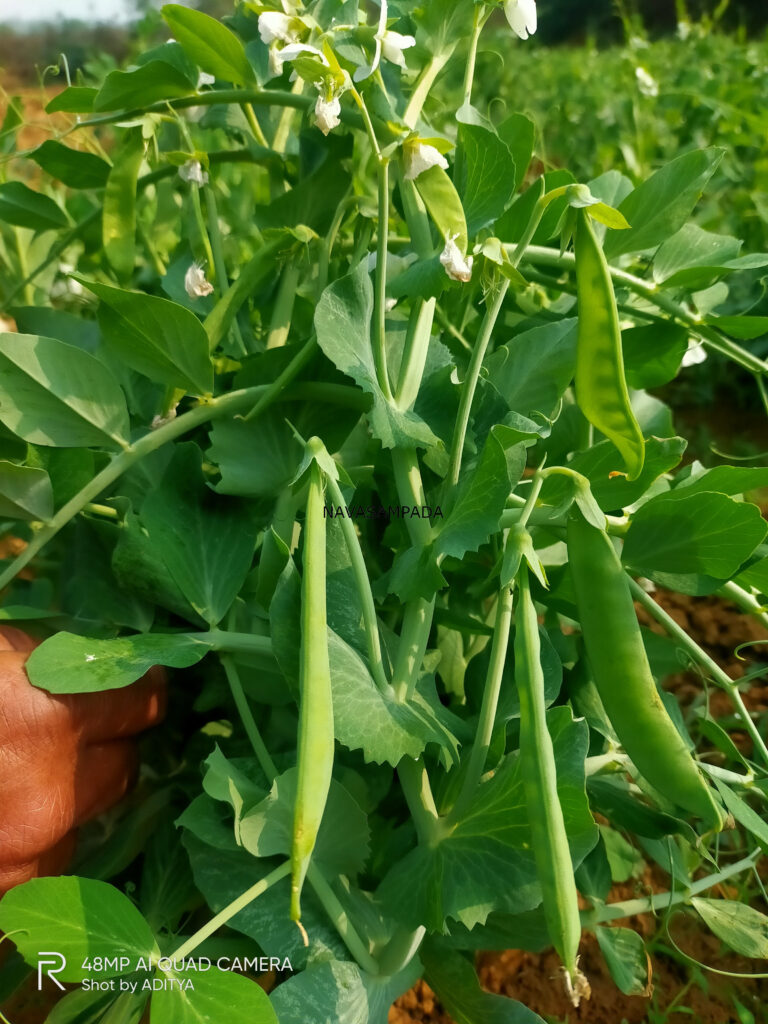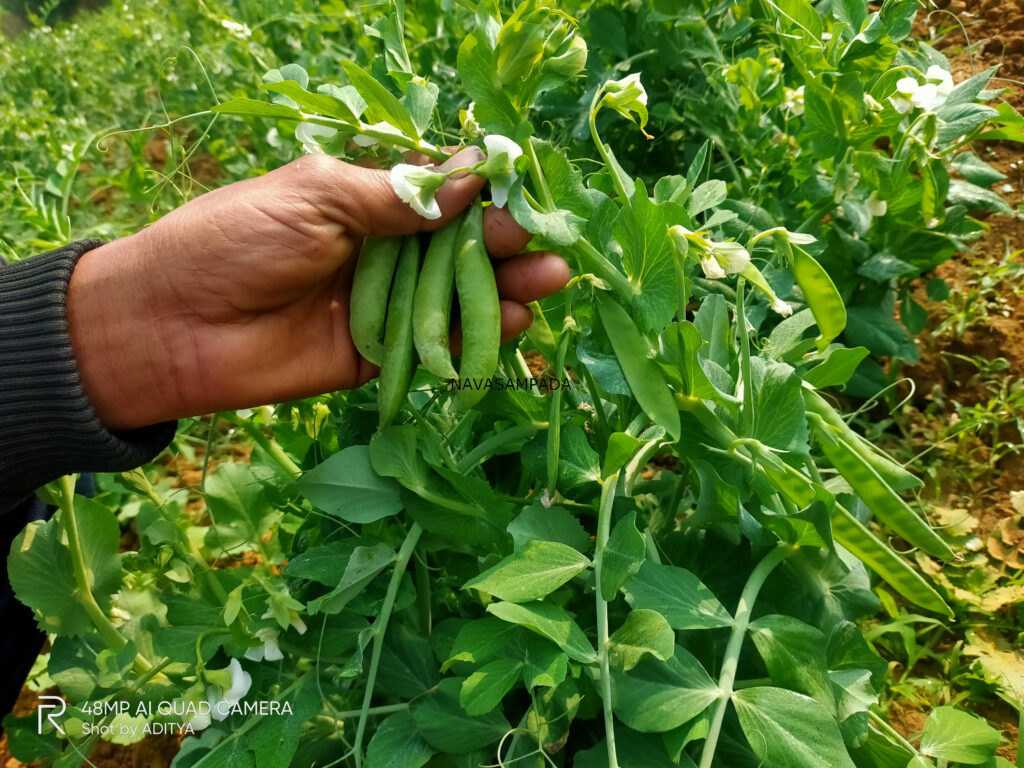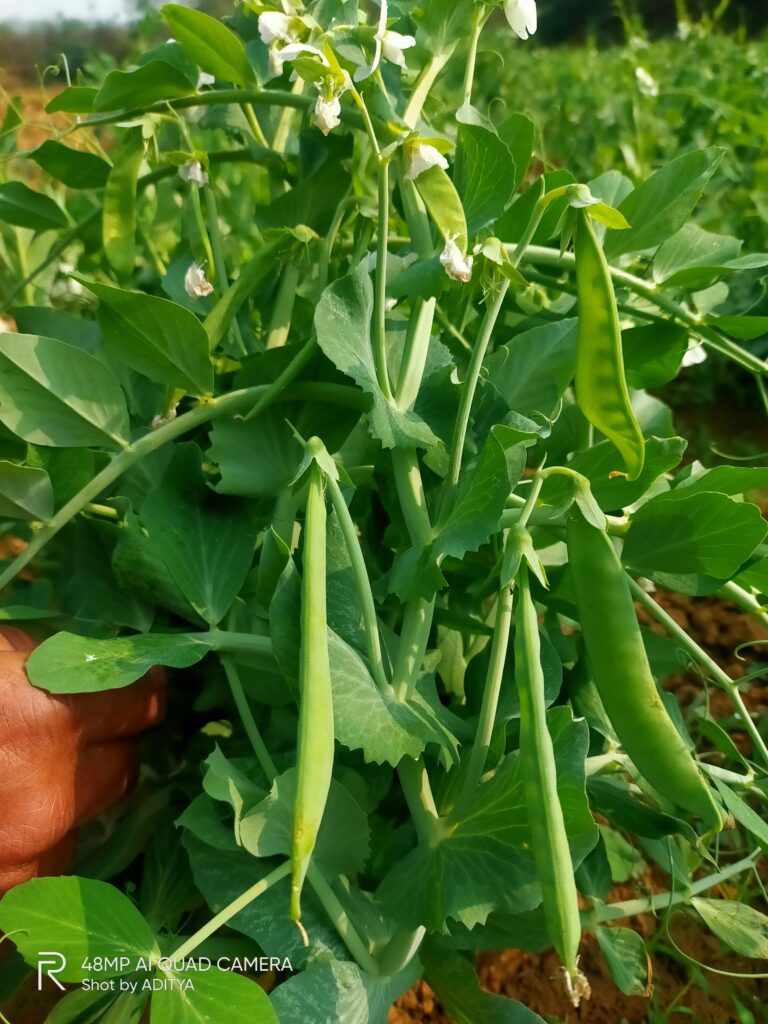Green pea farming can be a highly rewarding and profitable venture when managed properly. Peas (Pisum sativum) are cool-season crops that thrive in moderate climates and can be grown in both spring and fall. This comprehensive guide will help you establish a successful green pea farm.
Climate and Soil Requirements
Climate: Green peas prefer cool, moist weather with temperatures between 50–77°F (10–25°C). They are frost-tolerant but struggle in extreme heat, making them ideal for spring or fall planting in temperate regions.
Soil: Choose well-drained, loamy soil rich in organic matter. A soil pH of 6.0–7.5 is ideal. Avoid heavy clay or waterlogged soil, as peas have shallow roots that need good drainage.



Selecting the Right Variety
Variety: The type of pea you choose should be based on your climate and market demand. Common varieties include:
- Garden Peas (Sweet Peas): Grown for mature, sweet peas.
- Snow Peas: Harvested when the pods are still flat and tender.
- Snap Peas: A hybrid between garden and snow green peas, known for their sweet flavor and edible pods.
Variety Considerations: Some varieties, like Sugar Snap and Little Marvel, are perfect for home gardeners or small-scale farms, while others may be better suited for larger commercial operations.
Preparing the Soil
Soil Preparation: Begin by clearing the field of weeds, rocks, and debris. Till the soil to a depth of 2–4 inches to improve aeration.
Amend the Soil: Add organic matter such as compost or well-rotted manure to enhance soil structure and fertility. Peas naturally fix nitrogen, so avoid high-nitrogen fertilizers, but ensure the soil has sufficient phosphorus and potassium for healthy growth.
Raised Beds: In areas with heavy rainfall or poor drainage, raised beds can prevent waterlogging and ensure better root development.
Planting Green Peas
Timing: Plant green peas early in the spring or late summer for fall crops. They can tolerate light frosts, but they need soil temperatures of 45–55°F (7–13°C) for optimal germination.
Seed Preparation: Soak seeds in water for 12–24 hours before planting to encourage faster germination.
Planting Depth and Spacing: Plant seeds 1–1.5 inches deep with 1–2 inches between each seed. Space rows 18–24 inches apart to allow for airflow and easy access during harvesting.
Providing Support (For Vining Varieties)
Trellises: If growing vining peas, install a trellis, netting, or stakes to help the plants grow upright. This maximizes space, improves air circulation, and reduces disease risk. Vining varieties can reach heights of 3–5 feet.
Bush-Type Peas: For bush peas, a small mound of soil around the base or a raised edge on the rows may provide enough support to keep the plants upright.
Watering and Irrigation
Moisture: Green Peas need consistent moisture, especially during flowering and pod development. Avoid waterlogging, as peas are prone to root rot in overly wet conditions.
Irrigation Methods: Drip irrigation or soaker hoses are ideal for providing consistent moisture at the soil level while keeping foliage dry, which helps reduce disease risk.
Mulching and Weed Control
Mulching: Apply organic mulch, such as straw or wood chips, around the base of the plants. Mulch retains moisture, regulates soil temperature, and suppresses weeds.
Weed Management: Green Peas are sensitive to competition from weeds, especially in the early stages. Hand weeding or shallow cultivation is the best approach to prevent weeds without damaging the shallow pea roots.
Fertilizing and Soil Health
Fertilization: Green Peas are nitrogen-fixers, so avoid overapplying nitrogen fertilizers. A light application of balanced fertilizer or compost is usually sufficient, especially if the soil is deficient in phosphorus or potassium.
Crop Rotation: To maintain soil health and reduce disease buildup, rotate peas with other crops like corn, tomatoes, or leafy greens. Avoid planting peas in the same soil two seasons in a row.
Pest and Disease Management
Common Pests: Aphids, green pea weevils, and cutworms can damage pea plants. Use organic pest control methods, such as insecticidal soap or neem oil, as needed.
Diseases: Powdery mildew, blight, and root rot can be problematic, especially in humid conditions. Ensure good air circulation by spacing plants appropriately and rotating crops to prevent soil-borne diseases.
Harvesting Green Peas
Timing: Harvest green peas when the pods are fully developed but still tender. For snow peas, harvest the pods while still flat, before the peas inside develop. For garden peas, wait until the pods are swollen but still firm.
Harvesting Method: Pick green peas in the early morning when they are cool and crisp. Snap snow pea pods off with your fingers, and use scissors or garden shears to cut garden pea pods from the vines. Regular harvesting can extend the production period.
Post-Harvest Handling
Storage: Fresh peas can be stored in the refrigerator for up to a week. For longer storage, freeze peas. To freeze, blanch the peas for 1–2 minutes in boiling water, then transfer them to an ice bath before freezing to preserve flavor and texture.
Seed Saving: To save seeds for next season, allow some peas to mature fully. When pods are dry and brittle, collect the seeds and store them in a cool, dry place.
Marketing and Sales
Selling Fresh or Processed Peas: You can sell fresh peas in local markets, or supply them to processing companies for freezing or canning. Some farmers also dry peas for longer shelf life, which can be sold as dried peas or for use in soups and stews.
Record Keeping: Keep detailed records of planting dates, harvest schedules, pest control measures, and yields. This will help you plan better for future seasons.
Additional Tips for Success
Companion Planting: Peas grow well alongside crops like carrots, radishes, and turnips. However, avoid planting them near onions or garlic, as these can inhibit pea growth.
Succession Planting: For a continuous supply of fresh peas, plant new seeds every 2–3 weeks during the planting season. This ensures you have a steady harvest throughout the growing season.
Conclusion
By following these steps and maintaining proper care throughout the growing cycle, you can enjoy a productive green pea harvest and make your farm both sustainable and profitable. Whether you’re growing for fresh market sales, processing, or seed saving, green peas can be a valuable crop for your farm.